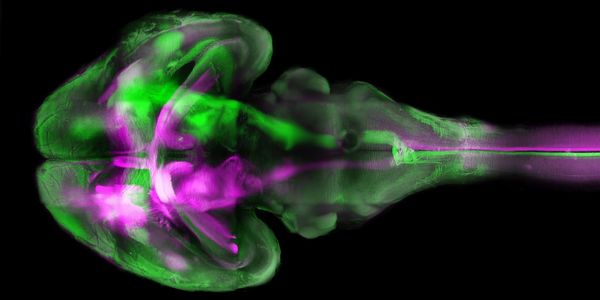Neuroscience
Neuroscience: the scientific study of the nervous system. The scope of neuroscience has broadened over time to include different approaches used to study the molecular, cellular, developmental, structural, functional, evolutionary, computational, psychosocial and medical aspects of the nervous system. The study of the nervous system can be done at multiple levels, ranging from the molecular and cellular levels to the systems and cognitive levels.
-
NOV 18, 2020 | 8:00 AMDATE: November 18, 2020 TIME: 08:00am PDT We develop and implement technologies to solve some of the major bottlenecks in biomedical research. In particular, we establish new imaging approac...NOV 16, 2020 | 8:00 AMDate: November 16, 2020 Time: 8:00am (PST), 11:00am (EST) CRISPR screening has become the prime discovery tool in modern biomedical research and drug discovery. At the same time, most screen...More than 50,700 Americans died of opioid overdose in 2019, and more than 1.6 million Americans live with addiction to opioids. Moreover, more than 50 million Americans suffer from chronic p...Speaker: Rebecca G. Baker, PhD , Linda L. Porter, PhD , Jack B. Stein, PhDPresented at: Opioid Crisis Virtual Event Series 2020
Multiplex detection of oncogenic mutations using LNA-based assays on the QIAcuity digital PCR system Digital PCR (dPCR) enables specific and sensitive detection of genetic alterations in onc...
Speaker:
Dr. Özlem Karalay
OCT 08, 2020 | 9:00 AM
Date: October 8, 2020 Time: 9:00am (PTD), 12:00pm (EDT), 5:00pm (GMT) Small DNA viruses require both host DNA replication and repair factors for their replication. The host cell replication...
OCT 08, 2020 | 7:00 AM
DATE: October 8, 2020 TIME: 7:00am PDT, 10:00am EDT, 4:00pm CEST How often do you pipette in your cell culture lab every day? Usually, we do it so often that we tend stop thinking about ho...
OCT 01, 2020 | 10:00 AM
Date: October 10, 2020 Time: 10:00am (PDT), 1:00pm (EDT) Rodent bile collection studies can be challenging. Not only do they require a technically difficult surgery, but there is also a lear...
A repeat expansion in the C9orf72-SMCR8 complex subunit (C9orf72) represents the most common genetic cause of two fatal neurodegenerative diseases: frontotemporal dementia (FTD) and amyotrop...
SEP 30, 2020 | 12:00 AM
CRISPR experiments are a powerful tool which are easy to carry out, however it is more difficult to determine the outcome of these experiments, and to ensure that only the desired targets we...
There are many methods of nucleic acid isolation. Each technology offers different approaches of purification of the template. However, it is important to control carry over of “proces...
Speaker:
Katherine Mechling
For more than a century, breakthroughs in biological sciences have relied on the ability to study cells outside of respective organisms. While majority of cell culturing is still performed u...
Speaker:
Jun Park, PhD
Extracellular vesicles (EVs) are lipid bilayer-delimited pieces of cells that are released from the plasma membrane as "ectosomes" and from the endosomal system as "exosomes.&...
Extracellular ligands bind to receptors on the cell surface leading to receptor internalization. Once internalized into small vesicles, the vesicles fuse with an organelle known as the sorti...
Intestinal organoids are self-organizing, 3D structures derived from either pluripotent stem cells or from primary tissues with the abiltiy to recapitulate some of the spatial architecture a...
Speaker:
Kevin Su
























